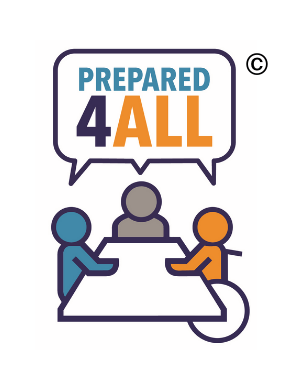Emergency Planning
If you are registering yourself, click For Myself to add the course to your cart. If you do not already have an account, you will be prompted to create the account during the checkout process. If you are registering one or more people, choose For Groups, and follow the check-out steps to manage a group.
Course List

This learning module provides an overview of deep canvassing techniques that can be used to have productive conversations regarding vaccine hesitancy. This is a free course that offers a certificate of completion.

This course is designed to increase your knowledge about whole community emergency planning, including COVID-19 planning, as well as provide you the basic information needed to connect with your own local emergency planners, public health professionals, and community. You can submit the certificate of completion to your CEU board. The Prepared4ALL course series and the HDI Learning Center have not renewed CEU options after 2021.
